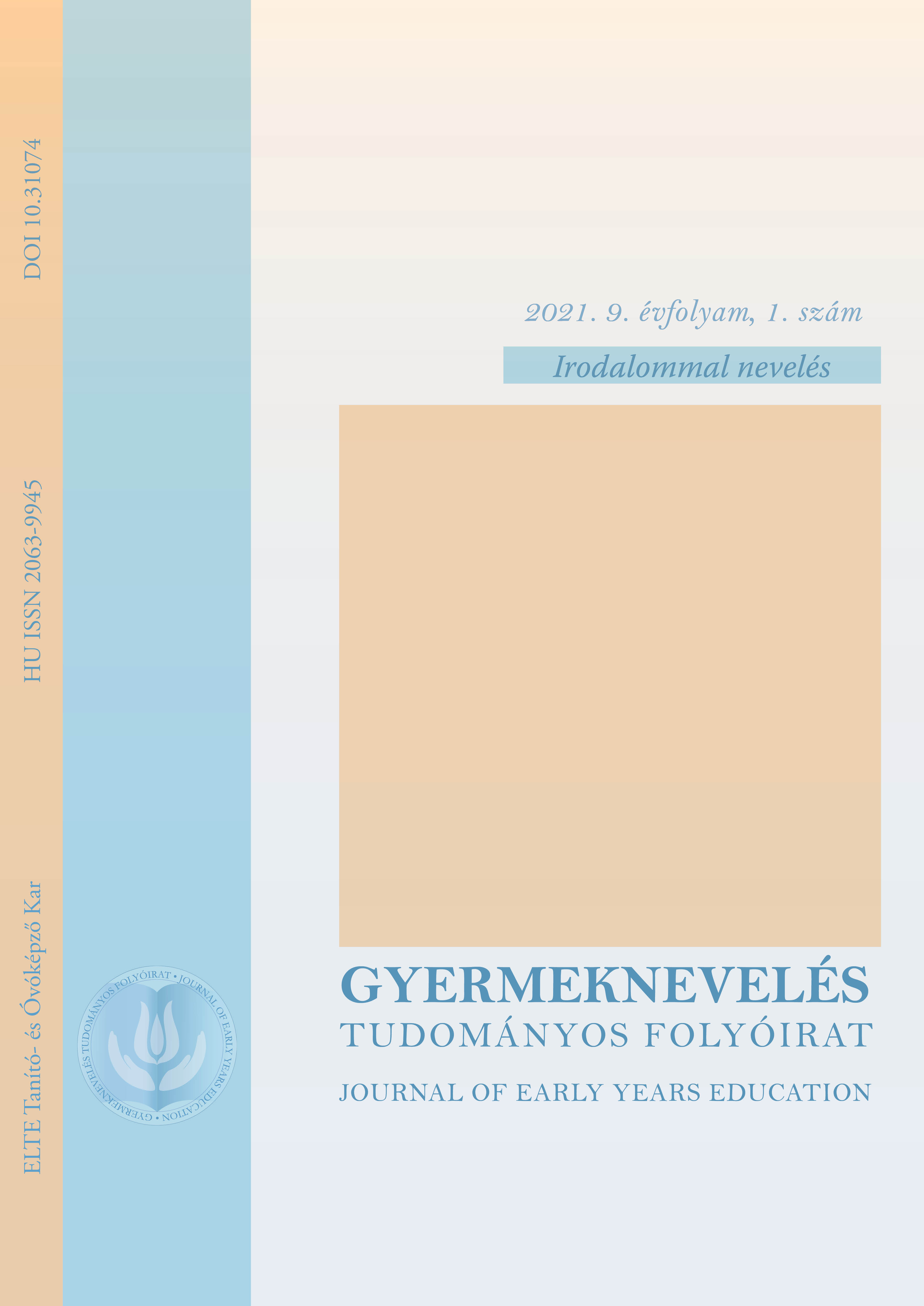What are we born with? Innateness: language and childlore
DOI:
https://doi.org/10.31074/gyntf.2021.1.87.98Keywords:
innateness, language and knowledge acquisition, collective unconscious, preformed and inherited structures, childlore, children’s literature, brain plasticityAbstract
This paper is an attempt to contribute to our understanding of what the child is born with, and how this relates to language, practice and arts (including, in particular, folklore and, to a lesser extent, literature). My hypothesis is that innateness is manifested not only in our conceptual and linguistic world and in the realm of knowledge acquisition, but also in the collective conscious and the preformed (predetermined), inherited structures that are constant sources of inspiration for folklore and literature. Childlore ought to have a privileged place in the study of innateness. The finest children’s literature builds on the fundamental structures and characteristics of childlore. This notion, which is rooted in C. S. Peirce’s theory of abduction, as revived and further developed by Chomsky, has already been discussed in some of my former papers on abduction. I have also tried to show that the works of Freud, Jung and Chomsky, are related in terms of the history of science. However, my arguments on innateness and its presence in childlore, are merely hypothetical. The method used in this paper basically derives from anthropological linguistics, but incorporate certain psychological and semiotic considerations.
Downloads
References
Balázs, G. (2020). Szimmetria a művészetben és a nyelvben. In Balázs, G., Imrényi, A. & Simon, G. (Eds.), Hálózatkutatás. Hálózatok a nyelvben (pp. 7–31). Magyar Szemiotikai Társaság.
Balázs, G. & H. Varga, Gy. (2008, Eds.). Az abdukció. Az abdukció logikája, szemiotikája. Magyar Szemiotikai Társaság – Líceum kiadó.
Chomsky, N. (1968/1995). Mondattani szerkezetek. Nyelv és elme. Osiris Kiadó.
Faragó, J. & Fábián, I. (1982, Eds.). Bihari gyermekmondókák. Kriterion Könyvkiadó.
Fónagy, I. (1990). Gondolatalakzatok, szövegszerkezet, gondolkodási formák. Linguistica, Series C, Relationes 3. MTA Nyelvtudományi Intézete.
Gállné Gróh, I. (2008). Zenei nevelés az óvodáskor előtt : “Ringató” - kisgyermekkori zenei nevelés a kodályi elvek alapján. Ringató, 50(3), 47–49.
Haffner-Kiss, A. (2017). Zenei hatások kutatása a magzati időszaktól az óvodáskorig (0–7 éves kor). Köztes-Európa, 9(1–2), 343–349. https://ojs.bibl.u-szeged.hu/index.php/vikekke/article/view/12771
Hámori, J. (1988). A veszélyeztetett értelem. Kozmosz könyvek.
Katona, I. & Szendrey, J. (1977) Bölcsődal. In Ortutay, Gy. (Ed.), Magyar néprajzi lexikon. A–E. (pp. 365). Akadémiai Kiadó.
Katona, I. (1992). Az európai népek bölcsődalai. In Katona, I., Utak a néprajzhoz – a néprajz útjai. Alapozó tanulmányok a népről és a néprajztudományról (pp. 99–110). Budapesti Művelődési Központ.
Kodály, Z. (1975). A zene mindenkié. Zeneműkiadó.
Kodály, Z. (1993). Magyar zene, magyar nyelv, magyar vers. Szépirodalmi Könyvkiadó.
Márkus, J. (2011, Ed.). Zenei anekdoták, aforizmák és viccek. Rózsavölgyi.
Németh, L. (1973). A kísérletező ember. Magvető és Szépirodalmi Könyvkiadó.
Szívós, M. (2017). Fordulópontok a hallgatólagos tudás és a tudattalan felfedezéstörténetében. A hallgatólagos tudás általános elmélete. MSZT – Loisir Könyvkiadó.
Sommerfeldt, K. E. (1973). Satzsemantik und Modalitát. (Mondatszemantika és modalitás.) ZPhSK. 26. 3(4). 284–296.
Tolcsvai Nagy, G. (2007). Idegen szavak szótára. Osiris Kiadó.
Várkonyi, N. (2009). Az elveszett Paradicsom. Széphalom Könyvműhely.
Voigt, V. (2014). A folklorisztika alapfogalmai. Szócikkek. Argumentum – Equinter.
Downloads
Published
How to Cite
Issue
Section
License
Copyright (c) 2021 Author

This work is licensed under a Creative Commons Attribution-NonCommercial-ShareAlike 4.0 International License.

